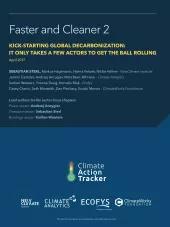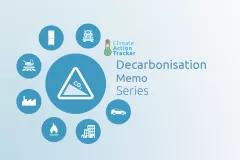The transition from fossil fuels to cleaner, safer energy technologies is under way. To pinpoint where decarbonization is happening most rapidly—and to extract lessons and best practices that can be applied to other areas of the global economy where progress is needed in the fight against climate change—this study by ClimateWorks, NewClimate Institute, Ecofys, and Climate Analytics compares past projections with actual developments in renewable energy, coal consumption, and passenger vehicles.
Key findings include:
- Decarbonization of the power sector is happening faster than predicted. Reduced coal use in the E.U. and the U.S., along with peaking of coal consumption in China (now predicted to occur between 2016 and 2020), indicates a continued shift in the world’s largest economies to cleaner sources of energy.
- Wind and solar capacity growth has dwarfed forecasts. Driven by policy and technology maturation, renewable energy deployment is taking place at significantly higher rates than previously projected and that were not deemed feasible a decade ago.
- Passenger vehicle fleets are one-sixth less carbon-intense in key economies than they were in 2005. A global 2°C-compatible rate of improvement for the next decade could be reached if best-practice emissions standards for passenger vehicles were implemented more broadly.
- Market penetration of electric drive vehicles (EDVs) is exceeding predictions. EDVs could become a fundamental driver for further lowering light-duty vehicle emission intensities.
These findings suggest that transformative coalitions of countries and climate leaders can accelerate market uptake and technology development in key areas. These coalitions are already underpinning international action on climate and can further hasten global decarbonisation.




